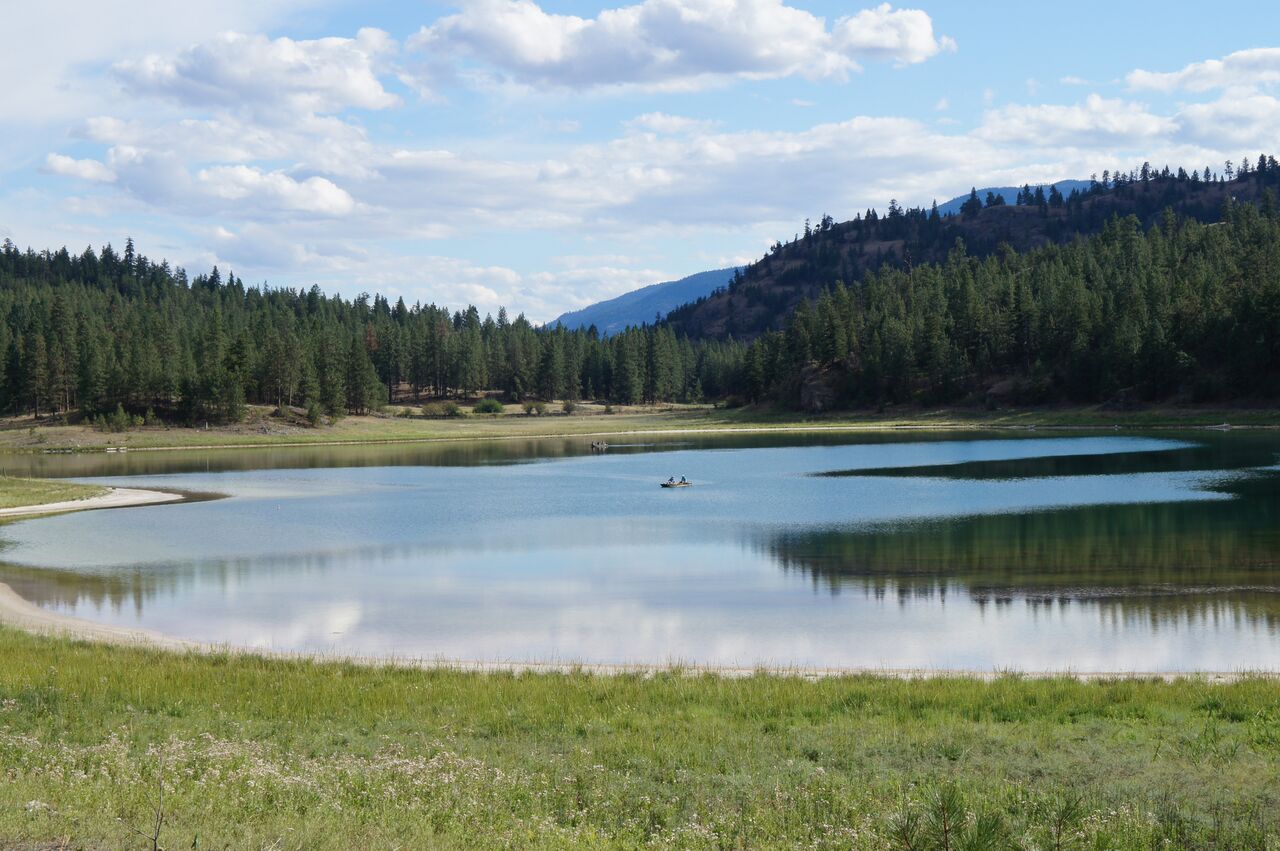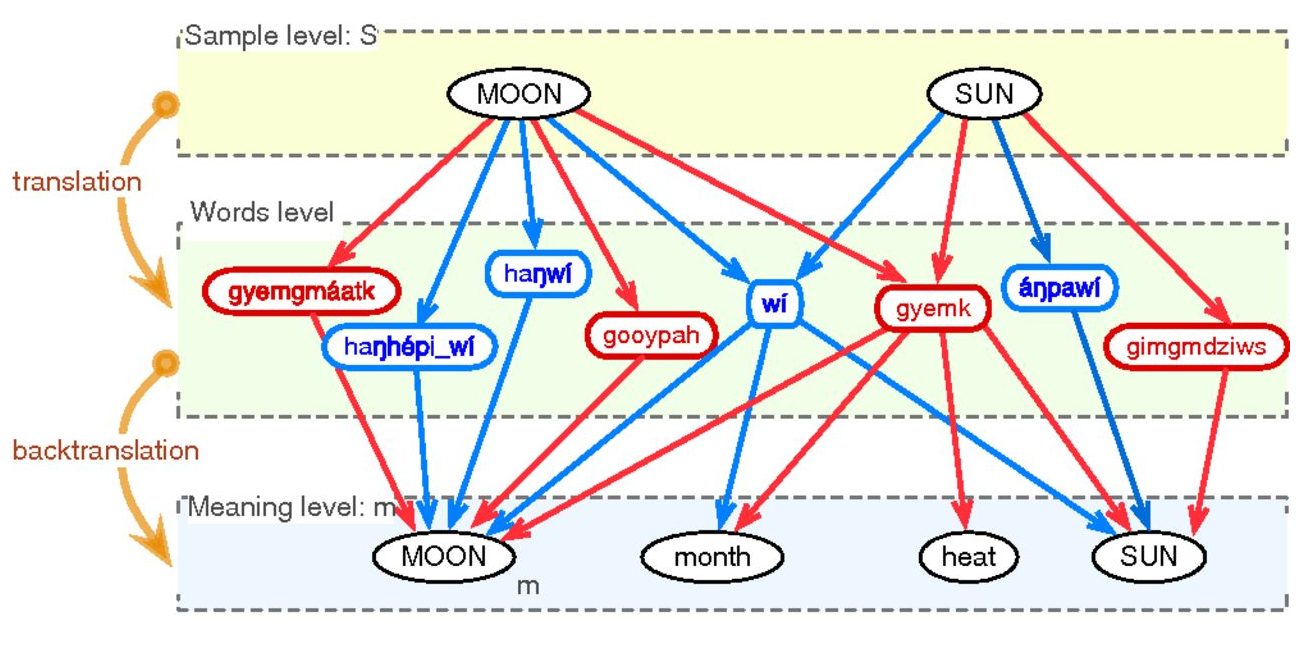Three billion years ago, Earth was a very different place.
-
Joint NASA-NSF Ideas Lab on the Origins of Life

Artist's rendering of a Ribonucleic Acid (RNA) molecule.
This artist's conception symbolically represents complex organic molecules, known as polycyclic aromatic hydrocarbons, seen in the early universe. These large molecules, comprised of carbon and hydrogen, are among the building blocks of life.June 07, 2016 • Written by: Julie Fletcher • Report issue
-
Earth’s ancient atmosphere was half as thick as it is today

One of the lava flows analyzed in the study, from the shore of Australia’s Beasley River. Gas bubbles that formed as the lava cooled, 2.7 billion years ago, have since filled with calcite and other minerals. The bubbles now look like white spots. Researchers compared bubble sizes from the top and bottom of the lava flows to measure the ancient air pressure.
The layers on this 2.7 billion-year-old rock, a stromatolite from Western Australia, show evidence of single-celled, photosynthetic life on the shore of a large lake. The new result suggests that this microbial life thrived despite a thin atmosphere.Source: [University of Washington]
June 07, 2016 • Written by: Hannah Hickey • Report issue
-
Below the Chemocline in a Meromictic Lake

Mahoney Lake in British Columbia.Metagenomic sequencing has provided new information about understudied populations of microorganisms that inhabit Mahoney Lake in British Columbia at depths where light does not reach. Mahoney Lake is an extreme meromictic system, meaning that the lake contains layers of water that do not mix. There is a great deal of information concerning microorganisms that live in sunlit portions of Mahoney Lake, and similar anoxic systems that contain high levels of sulfate and sulfide in the water column. However, less is known about communities living at depths below the photic zone.
The new study provides insight into the the types of ...
Source: [Frontiers in Microbiology]
June 02, 2016 • Written by: Aaron Gronstal • Report issue
-
Early Career Seminar: Chemical Gardens, Chimneys, and Fuel Cells: Simulating Prebiotic Chemistry in Hydrothermal Vents on Ocean Worlds

On Wednesday, June 1, 2016 at 11AM PDT, Laura Barge, NASA Jet Propulsion Laboratory, will be presenting the next early career seminar, Early Career Seminar: Chemical Gardens, Chimneys, and Fuel Cells: Simulating Prebiotic Chemistry in Hydrothermal Vents on Ocean Worlds.
Abstract: Planetary water-rock interfaces generate energy in the form of redox, pH, and thermal gradients, particularly in hydrothermal systems where the reducing, heated vent fluid feeds back into the more oxidizing ocean. Alkaline vents produced by serpentinization have been proposed as a possible location for the emergence of life on the early Earth due to various factors, including the mineral ...
May 31, 2016 • Written by: Julie Fletcher • Report issue
-
Genetic Studies of a Hyperthermophilic Archaeon

Lead author, Changyi Zhang, collecting samples in September 2014 at a hot spring in Yellowstone National Park.Scientists from Carl R. Woese Institute for Genomic Biology have identified a new genetic marker (the apt gene) in a species of archaea named Sulfolobus islandicus. S. islandicus is a hyperthermophilic member of the phylum Crenarchaeota, and can be found in environments like volcanic springs with temperatures up to 91°C. Currently, S. islandicus is rapidly developing as a model for studying archaeal biology as well as linking novel biology to evolutionary ecology using functional population genomics.
Previously, only one similar genetic marker (the pyrEF gene) was known for Sulfolobus species. However, the majority of Sulfolobus mutants that have been ...
Source: [Applied and Environmental Microbiology]
May 26, 2016 • Written by: Aaron Gronstal • Report issue
-
New Insight into Microbial Communities in Anoxic Sediments

Scanning electron micrographs of anaerobic Fe(II)-oxidizing cultures. From: Schadler et al. (2009) Formation of Cell-Iron-Mineral Aggregates by Phototrophic and Nitrate-Reducing Anaerobic Fe(II)-Oxidizing Bacteria, Geomicrobiology Journal.A new study provides insight into a well-recognized chemolithotrophic pathway that can be used by microorganisms inhabiting anoxic sediments. Researchers used an enrichment culture of chemolithoautotrophic organisms from freshwater sediments (dubbed Culture KS) as a model system to study the pathway: nitrate-dependent ferrous iron [Fe(II)] oxidation (NDFO).
Previous efforts to isolate the organism responsible for the oxidation of iron [Fe(II)] in Culture KS had proven unsuccessful. In the new study, researchers used metagenomic analysis to better understand the roles of different bacteria in Culture KS. Using this method, they were able to identify the primary Fe(II)-oxidizer ...
Source: [Applied Environmental Microbiology]
May 24, 2016 • Written by: Aaron Gronstal • Report issue
-
Workforce Trends in Geosciences Infographic

The colored rings signify the different sectors where geoscientists work. The wedges, in turn, represent the fields where geoscientists are employed and include different examples of occupations. Where the wedges intersect with the rings indicates that those fields are included in those sectors. Image credit: Illustrator: Kathleen Cantner. Content: Heather Houlton & Abigail SeadlerThe American Geosciences Institute (AGI) developed an infographic as a part of their Preparing Our Workforce (POW) Initiative to help students entering the workforce redefine what it means to have a career in geoscience. Having a successful geoscience career is not solely about mastering the technical fields of study. Students must seamlessly integrate their interests and competencies to build a professional portfolio that bolsters their career. Recognizing the importance of emphasizing the transferability of skills across different fields is imperative to students’ employability as geoscientists.
Source: [American Geosciences Institute ]
May 18, 2016 • Written by: Julie Fletcher • Report issue
-
The Universal Structure of Human Lexical Semantics
A new study explores how properties of organization and cognition in the human brain could be universal. Researchers focused on semantics, or ‘meaning expressed through language,’ and developed an empirical measure of how semantics might reflect cultural, historical, and environmental backgrounds. The results highlight a universal structure underlying the sampled vocabulary across different language groups and largely independent of geography or environment.

Schematic of a bipartite semantic network constructed through translation (first layer to second layer) and back-translation (second layer to third layer) for MOON and SUN in two American languages: Coast Tsimshian (red) and Lakhota (blue).Source: [PNAS]
May 16, 2016 • Written by: Aaron Gronstal • Report issue
-
Stromatolites, it’s a Matter of Scale

In situ macro and mesostructure of Barstow Formation tufa. Image credit: Ibarra and CorsettiThe processes that govern the formation of stromatolites—structures that may represent macroscopic manifestation of microbial processes and a clear target for astrobiological investigation—occur at various scales (local versus regional), yet determining their relative importance remains a challenge, particularly for ancient deposits and/or if similar deposits are discovered elsewhere in the Solar System.
A new paper builds upon the traditional multiscale level approach of investigation (micro-, meso-, macro-, mega-) by including a lateral comparative investigational component of fine- to large-scale features to determine the relative significance of local and/or nonlocal controls on stromatolite morphology, and in the ...
Source: [Astrobiology]
May 11, 2016 • Written by: Julie Fletcher • Report issue
-
An Inner Edge for Habitable Planets around Low-Mass Stars

Our sun has a temperature of about 5800K. For stars cooler than our sun (M dwarfs at 3000-4000K) the habitable zone is closer in. For hotter stars (A dwarfs at 10,000K) the region is much farther out.Researchers have provided new estimates for the inner edge of the habitable zone for synchronously rotating terrestrial planets around late-K and M-dwarf stars. Using a 3-D Earth-analog global climate model (GCM), the team has shed new light on the relationship between the rotational rates of planets and habitability around these types of stars. The results indicate that rotation rates for planets at the inner edge of the habitable zone become faster and that the inner edge is farther away from the host star than indicated in previous GCM studies.
The paper, “The inner edge of the habitable zone for synchronously ...
Source: [Earth and Planetary Astrophysics]
May 09, 2016 • Written by: Aaron Gronstal • Report issue
-
Could Earth’s light blue color be a signature of life?

Blue, but deadly: the gas giant exoplanet HD 189733b, which is superhot and likely has rains of glass.
The iconic “pale blue dot” image of Earth taken by the Voyager 1 spacecraft, from a distance of 3.7 billion miles in 1990. Earth is the speck halfway down the brownish streak to the right. The streaks are artifacts, caused by the scattering of sunlight in the probe’s optics.Source: [astrobio.net]
May 06, 2016 • Written by: Adam Hadhazy • Report issue
-
Protecting Special Regions on Mars

This low-angle self-portrait of NASA's Curiosity Mars rover shows the vehicle at the site from which it reached down to drill into a rock target called "Buckskin." The MAHLI camera on Curiosity's robotic arm took multiple images on Aug. 5, 2015.A new paper presents the case for updating the current planetary protection policy applied to “special regions on Mars” based on new information about Earth organisms. Mars’ “Special Regions” are areas where exploration missions must undergo strict planetary protection measures prior to launch due to the fact that environmental conditions in the region could be conducive to the growth of microorganisms from Earth.
The study, “Planetary Protection and Mars Special Regions – A Suggestion for Updating the Definition” was published in the journal Astrobiology. The work was supported by the NASA Astrobiology Institute (NAI) element of the NASA Astrobiology Program.
Source: [Astrobiology]
May 02, 2016 • Written by: Aaron Gronstal • Report issue
-
The NASA Astrobiology Program announces selections from two funding opportunities

The NASA Astrobiology Program and the NASA Astrobiology Institute are pleased to announce the selections from two funding opportunities.
The NASA Postdoctoral Fellowship Program selected two Fellows from the November 2015 opportunity:
- Barbara Lafuente Valverde
Advisor: Thomas Bristow, NASA Ames Research Center (Habitable Worlds)
Topic: Use of clay minerals as paleoenvironmental indicators of the origin of Ediacaran multicellular life in the Doushantuo Formation
- Kazumi Ozaki
Advisor: Chris Reinhard, Georgia Institute of Technology (NAI, University of California, Riverside team)
Topic: New Quantitative Approaches Toward Understanding The Life History Of An Inhabited Planet
From the April 2016 NASA Astrobiology Institute Early Career ...
April 28, 2016 • Written by: Julie Fletcher • Report issue - Barbara Lafuente Valverde
-
Ancient volcanoes could be key to predicting impact of climate change

Researchers think emissions from volcanos, such as the one seen here, may have led to a dramatic rise in CO2 leading to a mass extinction 200 million years ago. (Photo/NASA Earth Observatory)Just over 200 million years ago, long before the demise of the dinosaurs, a cataclysm killed off a significant chunk of the planet’s animal life. The leading theory implicates massive volcanic eruptions, triggered when the supercontinent of Pangea was ripped apart into separate continents.
A new study co-authored by USC researchers, including Yadira Ibarra, NAI/APS Lewis and Clark Fund for Exploration and Field Research in Astrobiology awardee, strengthens evidence for that theory and has wider implications for how rapid climate change can affect life on Earth. Along with lava flows, the volcanic eruptions released massive amounts of the ...
Source: [USC News]
April 26, 2016 • Written by: Andrew Good • Report issue
-
Death Valley Celestial Centennial – MarsFest Symposium

Astrobiology booth staffed by Jack Farmer and Sheri Klug both from ASU. Image Credit: Barbara VanceFew places in the United States have night skies that are as dark and inviting as Death Valley. There are also very few places in the world where the extremes of our planet can offer a look into what may be possible in our Solar System and beyond. In conjunction with the National Park Service’s 100th anniversary, scientists and the public met in Death Valley for an opportunity to learn more about our planet and solar system, and to learn how that knowledge helps plan for humans to explore beyond Earth.
There are several planetary analog research sites within ...
April 25, 2016 • Written by: Barbara Vance • Report issue



